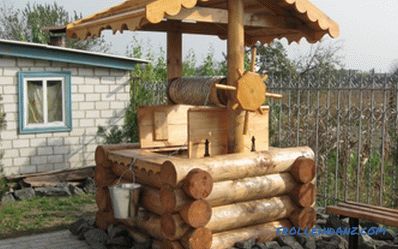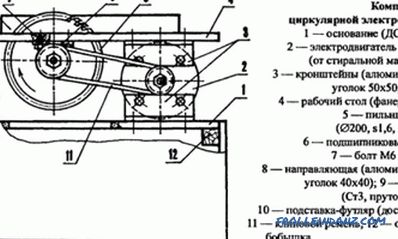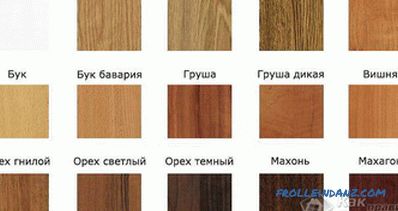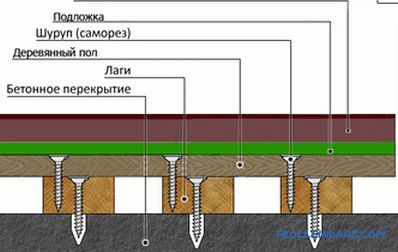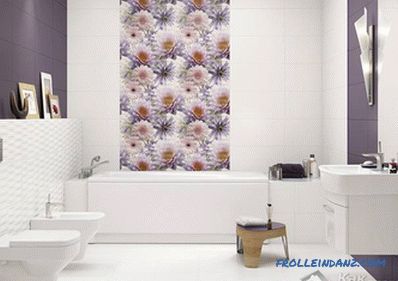Recently, more and more often homeowners, if they wish to sheathe the facade of the house, prefer siding. This material improves the aesthetic performance of the house and, more importantly, protects the structure from the effects of aggressive environment. Siding is easy to install and you do not need to have a special tool. However, how to choose a siding for the house? This will be discussed in this article.
Siding is made of different materials. Among them are metal, wood, PVC and vinyl. The resulting panels successfully imitate other materials. Brick siding makes the look of the house aesthetically attractive and more expensive, while finishing the house will not cost you much. Siding, imitating stone, will give your estate solidity despite the fact that the mass of the facing itself will be insignificant, and siding under the tree will create an imitation in the best ecological traditions with high refractoriness.
If you decide to choose one of the siding options, you should consider that each of them has unique characteristics, advantages and disadvantages.
Varieties of siding
The choice of material for finishing the facade of a house depends on the project and subsequent operating conditions. Types of siding differ in strength, weight, conditions of care and whimsical.
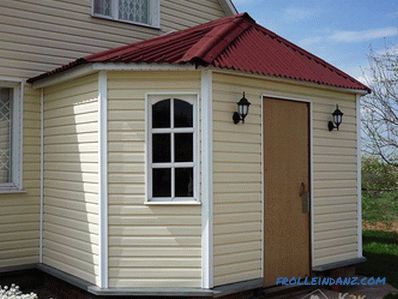 Vinyl
Vinyl
Vinyl siding. This type of facing material imitates brick, wood paneling and natural stone. The panels are made of PVC. There are many colors on the market, which allows you to purchase material that corresponds to the surrounding area and the style decision of the facade decoration.
Among the advantages of the vinyl panel it is worth noting a wide color palette, a variety of textures, resistance to deformation and weathering, low cost, long operating life, which exceeds 50 years. The lack of material is the need to take into account the coefficient of linear expansion when assembling nodes. Only with proper installation, vinyl siding will not be deformed due to temperature changes.
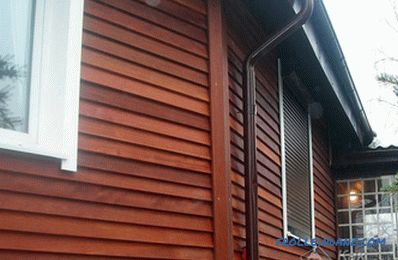 Wooden
Wooden
Wooden siding. Wood is an environmentally friendly material, but its essential drawback is that due to the negative influence of the external environment, mold and parasites can form in it. Therefore, wood siding should be properly dried in the factory. In addition, the wood is often impregnated with antiseptics. The material, of course, is eco-friendly and aesthetically attractive, plus it also has high thermal insulation properties. Among the disadvantages of wood siding is the high cost of the material, the tendency to deform, fragility, low refractoriness, and the need for regular painting.
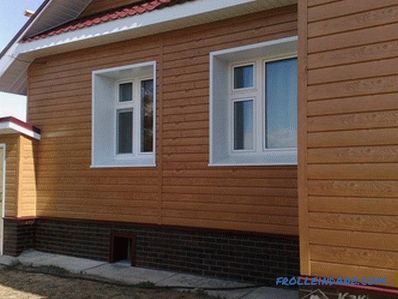 Metal wood
Metal wood
Metal siding. Zinc, steel, and aluminum siding can be used for building cladding. For the construction of private estates used decorative siding of metal, which mimics the structure of the tree. The material is resistant to temperature, durable and durable, it does not form mold and parasites do not start.
Aluminum panels, unlike steel and zinc, are easily deformed. And with the formation of dents to restore the surface is impossible. Among the shortcomings of metal panels for facing the house, it is necessary to note the possibility of polymer detachment from the galvanized layer and the likelihood of rust in places of metal cutting.
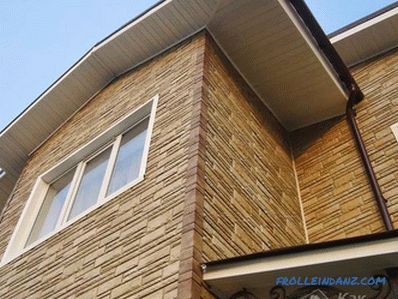 Cement
Cement
Cement siding. The material is made from high quality cement with the addition of cellulose. With it, you can replace an expensive decorative stone. Among the advantages are durability and reliability, non-inflammability, resistance to fungus, mold and rotting, the possibility of restoration. Cement siding has a significant drawback - a lot of weight. Because of this, the framework subsystem may require amplification, and this, of course, entail additional financial costs.
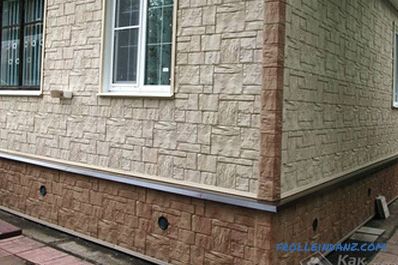 Ground
Ground
Ground siding. PVC siding or cement siding is suitable for finishing the basement. This material imitates stone and bricks very precisely. The minimum thickness of the basement siding - 3 mm. This is due to the fact that the material will be close to the ground, due to which it can be exposed to moisture and mechanical damage. How to install basement siding, read here.
Now you know all the varieties of siding, their advantages and disadvantages, and only you can decide which siding is better. Below are some more recommendations that should be considered when purchasing panels for facade cladding.
What to look for
It is important to pay attention to the width of the panels.It should be the same across the entire siding surface.
Sometimes unskilled specialists try to sell products under the guise of a defective batch of a reputable manufacturer, but you should not fall for such tricks, even if the price of the material is too low.
If you live in an area where gusty winds are not uncommon, then check whether the panels have an anti-uregano lock, which is a small bend from above, not far from the mounting hole. If you buy a siding with an anti-uraganic lock, then even with a strong wind your facade will remain intact.
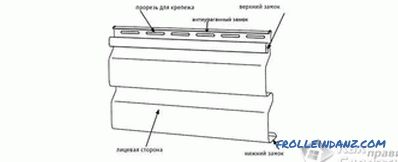 Anti-Hillock Lock
Anti-Hillock Lock
The steel siding withstands extreme cold, so if you live in the north of the country, better buy just this kind of facade cladding. However, vinyl panels are more resistant to deformation. If the house that you want to revet is newly built and will shrink in the future, it is better to purchase vinyl panels.
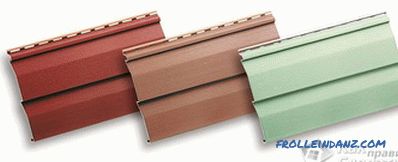 Siding color
Siding color
The high-quality siding color is the same on all sides, which means that that the material was painted in bulk. This type of staining is more resistant to the aggressive effects of the external environment, the color does not fade and does not crumble.
When making a purchase of siding, take care immediately of purchasing installation accessories, because without them installation of panels is impossible.
If you have any questions on the topic, write comments to the article. Our experts will provide you with comprehensive information on the issue of interest to you. Did our article help? Then share what it was useful for you.
We recommend reading:
- installing a garage door with your own hands;
- how to build a house of aerated concrete with your own hands.
Video
Choose your siding carefully and listen to the recommendations of experts:
